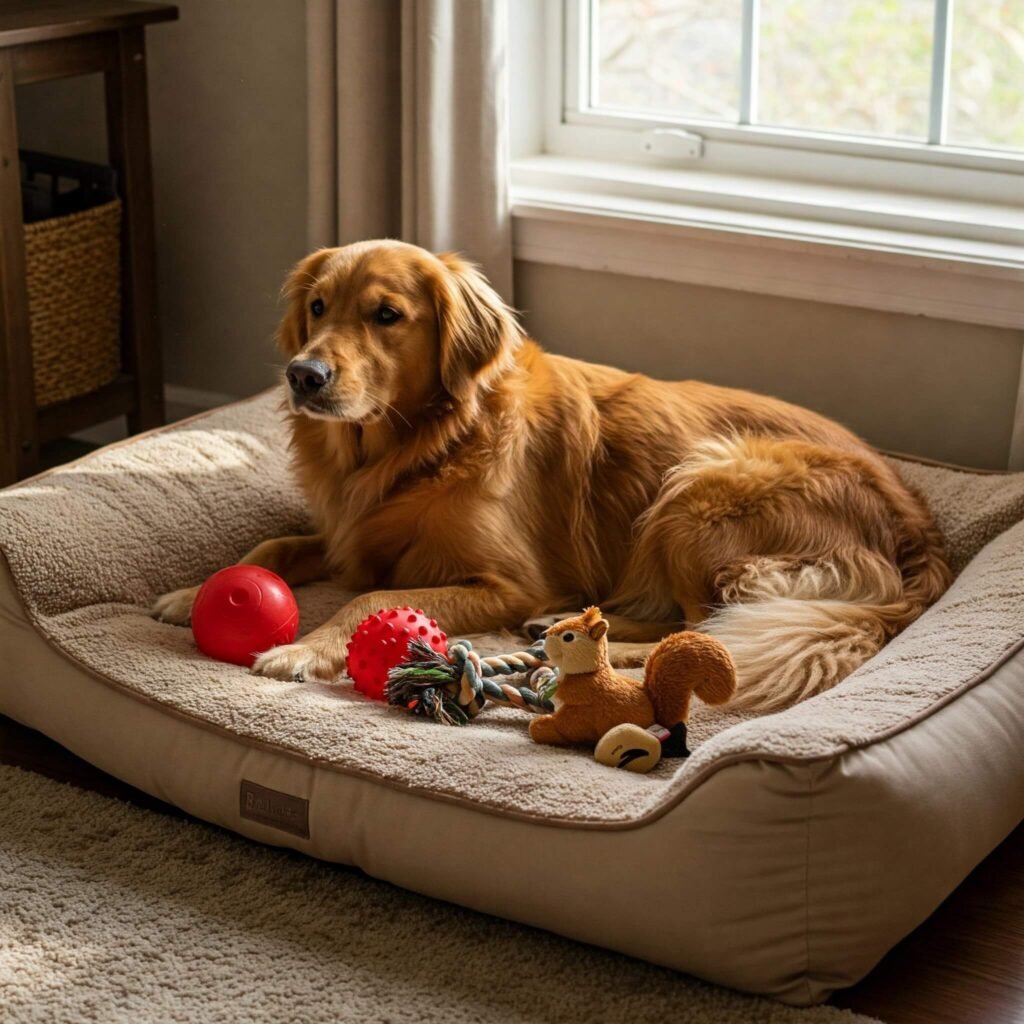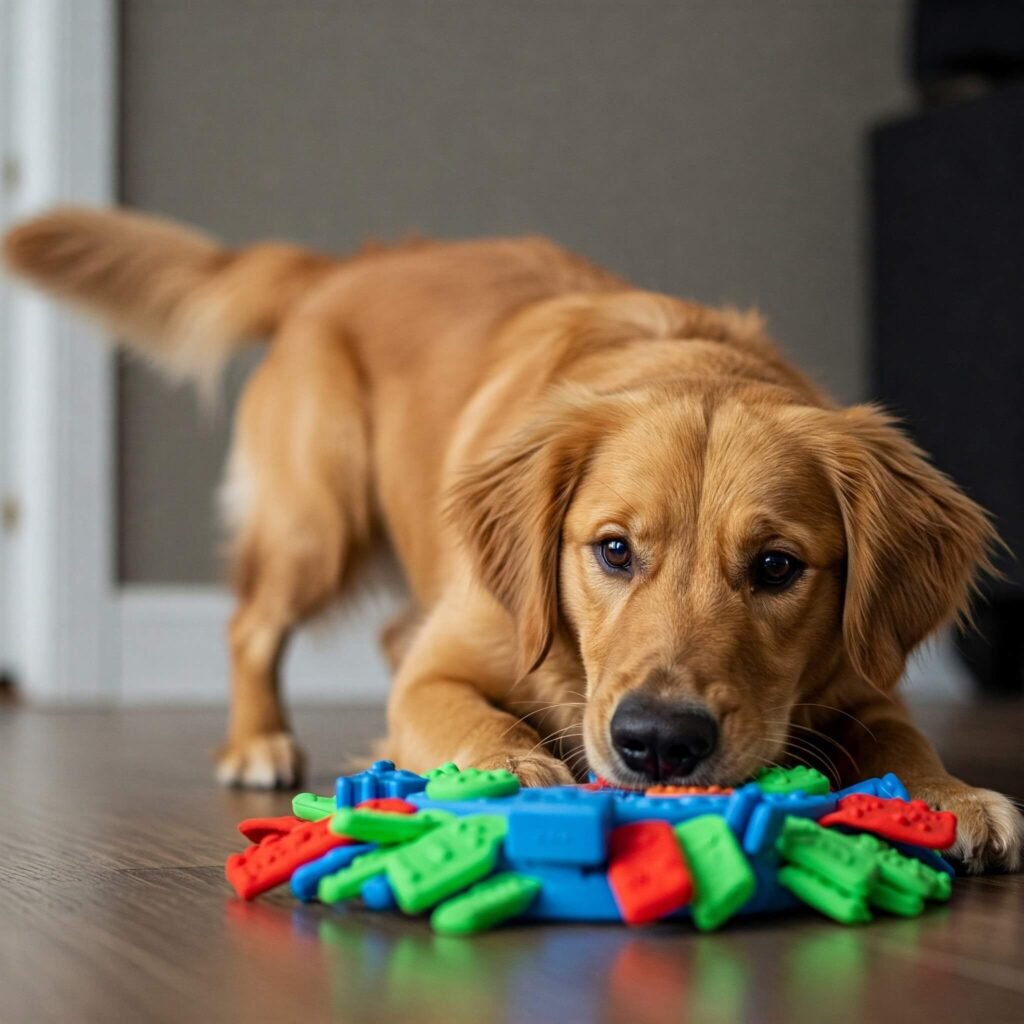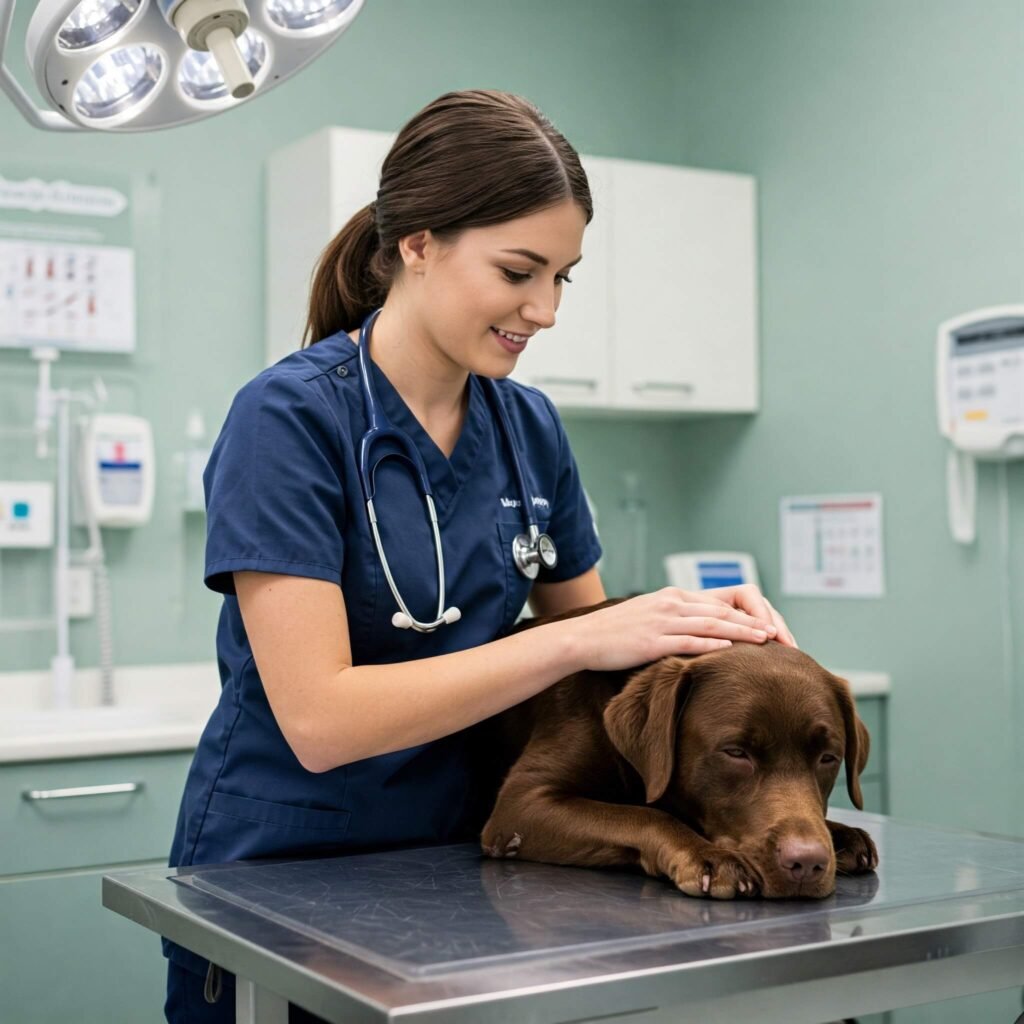Leaving your furry friend home alone can be heart-wrenching, especially when they exhibit signs of distress. Separation Anxiety in Dogs, indeed, is a common issue affecting many pets, causing them significant emotional turmoil. Therefore, understanding the causes, recognizing the signs, and implementing effective calming strategies are crucial for both your dog’s well-being and your peace of mind

Understanding the Roots of Separation Anxiety in Dogs
Several factors can contribute to separation anxiety in dogs. For instance, changes in routine can significantly impact a dog’s emotional state.
- Changes in Routine: A sudden shift in your schedule, such as a new job or a change in living arrangements, can trigger anxiety. Specifically, even minor changes can be disruptive.
- Lack of Socialization: Dogs that haven’t been properly socialized may struggle with being alone. In other words, they haven’t learned to cope with solitude.
- Past Trauma: Rescue dogs or those with a history of abandonment may develop separation anxiety due to past experiences. Consequently, they associate being alone with negative events.
- Over-Attachment: Some dogs form an intense bond with their owners, making it difficult for them to cope when left alone. Furthermore, this bond can amplify their distress.
- Age: Puppyhood and senior dogs can both be more susceptible to anxiety. Notably, these life stages often involve increased vulnerability.
Outbound Link: American Kennel Club – Anxiety in Dogs
Recognizing the Signs of Separation Anxiety in Dogs
Identifying the signs early can help you address the issue effectively. To begin with, common symptoms include:
- Destructive Behavior: Chewing, digging, or destroying furniture. Additionally, this behavior is often directed at items with your scent.
- Excessive Barking or Howling: Persistent vocalizations when left alone. Moreover, this can disturb neighbors.
- Pacing or Restlessness: Constant movement and inability to settle. Similarly, they may circle or exhibit repetitive behaviors.
- Inappropriate Elimination: Urinating or defecating indoors, even if house-trained. Notably, this is different from a lack of housetraining.
- Escape Attempts: Trying to break out of crates or rooms. In particular, they may damage doors or windows.
- Excessive Drooling or Panting: Physical signs of stress. Ultimately, these indicate high anxiety levels.
Calming Tips for Dogs with Separation Anxiety
Managing separation anxiety in dogs requires patience and consistency. Therefore, here are some effective calming tips:
- Gradual Desensitization:
- Start by leaving your dog alone for short periods, gradually increasing the duration. Essentially, you’re training them to be comfortable alone.
- Practice leaving and returning without making a fuss. Otherwise, you reinforce their anxiety.
- Create a Safe Space:
- Designate a comfortable area with their favorite toys and blankets. Specifically, this should be their “den.”
- Consider using a crate as a den, not as a punishment. However, introduce it positively.
- Provide Mental Stimulation:
- Use puzzle toys or treat-dispensing toys to keep them occupied. Thus, they’re distracted and engaged.
- Engage in interactive play before leaving. Subsequently, they’re more relaxed.
- Establish a Routine:
- Maintain a consistent schedule for feeding, walks, and playtime. Hence, predictability reduces anxiety.
- In short, predictability is key.
- Use Calming Aids:
- Consider using pheromone diffusers or calming supplements. However, consult your veterinarian first.
- Consult your veterinarian for professional advice. After all, they can offer tailored solutions.
- Professional Training:
- Seek assistance from a certified dog trainer or behaviorist. They can, therefore, provide personalized strategies.
- They can provide personalized strategies to address your dog’s specific needs.

Creating a Safe Haven for Your Anxious Dog
A comfortable, safe space is crucial for dogs with separation anxiety in dogs. To that end, ensure their crate or designated area is:
- Comfortable: Provide soft bedding and familiar scents. In this way, they feel secure.
- Secure: Ensure the area is safe and escape-proof. Otherwise, they may injure themselves.
- Positive Association: Make it a positive space with treats and toys. Accordingly, they’ll associate it with good things.
The Importance of Consistency in Addressing Separation Anxiety in Dogs
Consistency is key to helping your dog overcome separation anxiety in dogs. Above all, stick to your routine, be patient, and celebrate small victories. With time and dedication, your furry friend can learn to feel secure and comfortable when left alone.
Outbound Link: ASPCA – Separation Anxiety
Seeking Professional Help for Severe Cases of Separation Anxiety in Dogs
If your dog’s anxiety is severe or doesn’t improve with your efforts, consult a veterinarian or a certified dog behaviorist. Ultimately, they can provide professional guidance and may recommend medication or specialized training.









































